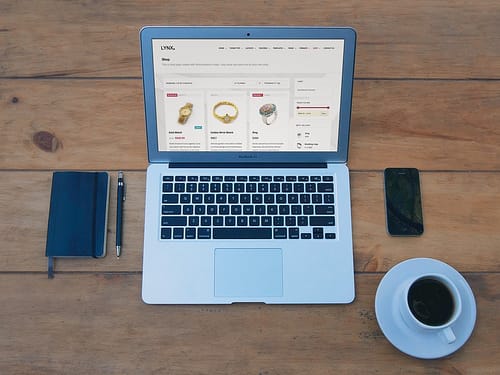8 Effective B2B eCommerce Strategies to Drive Sales and Conversions
Learn the eight B2B eCommerce strategies and tools you can use to propel your company towards success in the digital commerce marketplace.
3 min read
 Robert Giovannini
:
January 30, 2019
Robert Giovannini
:
January 30, 2019

Email lists are an essential tool for bringing in new customers and keeping existing customers engaged. They’re also crucial for notifying customers about sales and other events. eCommerce businesses can send out regular newsletters to keep customers updated, or use email listservs to keep clients in the loop about the latest products. Email click-through rates tend to translate to increased revenue for B2B companies with conversions more than four times higher than paid search, social media, and direct mail!
Even if your B2B organization has an active email list, you may not be taking full advantage of the tools offered by automated email marketing to grow your business and drive customers to your website. Here are our eight best tips for reaping the benefits of B2B email marketing automation.

Image via Flickr by perzonseowebbyra
When you begin considering how B2B email marketing automation can benefit your business, conduct an audit of all repetitive email-related tasks employees carry out. Many of these tasks are ideal candidates for automation. Tasks such as following up with leads, updating a CRM, or notifying customers of a sale may all be more useful and efficient if automated, saving you and your employees time and energy to devote to core tasks.
Lead scoring, a method used to rank the value of potential customers based on their behavior and interests, is critical for B2B organizations due to their relatively longer sales cycles. Lead scoring allows B2B companies to prioritize which leads to reach out to and when. Automation can assign lead scores to potential clients based on metrics such as engagement with your email messaging and behavior on your website, and can follow up via email with leads based on their ranking and behavior.
Segmentation, or dividing your email list into sub-groups of consumers, allows you to target email messages to clients based on their interests, activities, and preferences. Segmented emails tend to have higher click-through and engagement rates, and therefore generate more sales. Rather than sending out non-specific email blasts to all customers, segmenting can help you keep in touch with specific clients by providing information and products that are relevant to them. Automation can help you segment your email list easily and efficiently.
Allow your subscribers to manage their preferences, so they’re not receiving large numbers of emails that don’t speak to their interests or needs. Otherwise, they are likely to ignore or delete your emails without reading them. B2B email marketing automation can provide your clients with the ability to decide how often they want to be contacted, whether they want to hear about particular products or types of sales, and specify other preferences. Allowing clients to manage their email preferences means they’re more likely to stay on your email list and actually read the mail they receive. This will lead to higher click-through rates, which often translates to more sales.
Analysts often give conflicting advice about what day and time are optimal for sending emails. Some studies have found that Tuesday is the best day to send an email, others say its Monday, and still others say that Saturday is actually optimal. While it doesn’t hurt to be guided by these types of data-driven studies, your clients will have their own preferences and habits that might diverge from the average email recipient.
Testing varied options will allow you to discover what those habits are. Try sending different kinds of email messages on different days of the week, at different times of day, and with different types of subject lines. By tracking your email open rates, you’ll notice which day, time, and type of subject line are optimal. You will also likely notice that various segments of your email list respond uniquely. Segmenting can then allow you to customize and automate your messages, maximizing the chances your emails actually get read by clients.
Some analysts suggest sending emails with more images. They say that many subscribers will be reading your email on their mobile phones, which makes it more difficult to read a lot of text, and that text-heavy emails may not be read. Others recommend sending plain-text emails, arguing that many subscribers are using an email program that blocks out images, or that images can take longer to load properly.
Fortunately, you can have the best of both worlds by using MIME, or multi-purpose internet mail extensions, which bundles together an HTML and plain-text version of the same email. This makes email more likely to reach more subscribers and allows you to combine text and images in interesting ways.
Most companies use B2B email marketing automation exclusively for marketing, and while sales is a natural fit for email automation, there may be other functions and departments that can take advantage of it, from account management and customer service to human resources and training teams. Broadening your use of email automation across your company can help increase the return on your investment in email automation software and make your email messages more effective across the board.
Some B2B companies go straight for the big guns, investing in software that ultimately doesn’t speak to their particular needs. Your business is likely to have specific B2B email marketing automation needs and a budget for this type of software.
Matching your budget to a platform that has the right features to help grow your business is critical. Book a consultation appointment with IronPlane to learn more about the best options for your individual business. IronPlane offers a suite of services for your B2B company including marketing/email automation that can aid in accomplishing your goals and hitting KPIs. Find out how B2B email marketing automation can help grow your business today.

Learn the eight B2B eCommerce strategies and tools you can use to propel your company towards success in the digital commerce marketplace.

Learn more about B2B Business Intelligence and Analytics and how you can take advantage of this information.

Learn the 5 Mistakes to Avoid With Your B2B eCommerce Site.